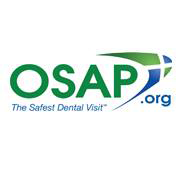Exploring the latest developments in infection prevention
Key takeaways and highlights from the 2019 OSAP annual conference. Safety is the top dog when infection control and prevention are concerned-both for patients and clinicians. Safety encompasses any number of subjects from hand hygiene to instrument processing to equipment upkeep and so much more.

Safety is the top dog when infection control and prevention are concerned-both for patients and clinicians. Safety encompasses any number of subjects from hand hygiene to instrument processing to equipment upkeep and so much more. Staying abreast of developments in infection prevention is no small task, but the Organization for Safety, Asepsis and Prevention (OSAP) is a resource helping professionals stay up to date on those matters.
From May 30 to June 2, 2019, in Tucson, Arizona, OSAP conducted its annual conference, affording an opportunity to discuss trends in infection control, prevention and safety.
OSAP is a community of clinicians, educators, researchers and industry representatives who advocate for safe and infection-free delivery of oral healthcare. OSAP focuses on strategies to improve compliance with safe practices and on building a strong network of recognized infection control experts.
Read more: 5 ways to design a better infection control workflow
Pre-conference boot camp

Before the meeting even formally began, organizers took advantage of the location to bring a condensed version of its annual, foundational program to area professionals. Each year, OSAP conducts its Dental Infection Control Boot Camp, a three-day course covering the fundamentals of infection prevention. At the 2019 annual conference, however, the organization offered a mini pre-conference version of the popular course. The conference’s Arizona venue afforded an ideal opportunity for those attendees who work with the Indian Health Services and Tribal Health Organizations.
“It was very well-received,” says OSAP Executive Director Michelle Lee. “We had over 200 attendees just for that event. We had people from all over attend who are involved in Indian Health Services from Alaska to Minnesota.”
The program was offered in an effort to bring foundational knowledge and skills to professionals who may not have had access to the organization’s material before.
“During the pre-conference Boot Camp for Indian Health Services and Tribal Health Organizations, Dr. Hudson Garrett presented on the Healthcare Infection Control Practices Advisory Committee (HICPAC) Core Infection Prevention and Control Practices for Safe Healthcare Delivery in All Settings,” says Eve Cuny, one of the conference’s co-chairs. “These core practices are accepted by the Centers for Disease Control and Prevention (CDC) as strong recommendations that are considered standard of care and are not expected to change based on additional research.”
Continue reading on page two...
Something for the consultants
The pre-conference program was especially useful for consultants who visit client dental practices and advise on infection prevention efforts. The course covered topics such as:
- The CDC’s app
- A measles update
- Revisiting manufacturer’s instructions for use
- “Microbial soup” in ultrasonics
- Validating cleaning
“The topic was, ‘What Do You Do When No One is Watching?’ From the consultant’s point of view, what are the hot topics when you’re in a private practice office?” says infection prevention consultant and speaker Jackie Dorst, RDH, BS.
For example, the CDC offers an app that can help with assessing infection prevention compliance.
“Several of the consultants, when they go into their offices, use the CDC app,” Dorst says. “It is a checklist that you can put on your mobile device, on your phone, on your iPad. You can go through each topic of infection prevention and make notations. For instance, let’s say they are not using the correct alcohol hand rub. You can add that in your notations to the side. What are the characteristics of the hand rub that they should be purchasing? You can save that as a document and email that to the practice, and you can save that in their file. Then, they have their action plan for items they need to correct in the office. It’s a huge asset. The CDC has had that app out for over year, but I don’t think it’s been used as effectively as it can be.”
More from the author: The top 10 best cities for dentists in 2019
Manufacturer’s instructions for use (IFUs) received extra attention this year, largely because, in the past few years, the FDA has issued new informational requirements for manufacturers, requiring that instructions for use are updated. While manufacturers may have updated their documentation, anything new or different is lost if practices don’t know to review that material.
“It was a very important issue because manufacturer’s instructions for use should have been reviewed by the FDA since 2015,” Dorst says. “If the practice has older instructions, say, for a sterilizer, they may not be placing packages in the sterilizer in the correct manner because the manufacturer may have changed the instructions, which were updated with the newer protocols.”

The issue was particularly relevant for consultants who work closely with their practices.
“It was a reminder to us consultants to actually review, with our clients, and help them to understand where they may need to update,” Dorst says. “They may have thought that they had records in place, but that’s not stagnant. There are changes that do happen. As consultants come in, they become both an adviser and a resource for assisting their practices in being up to date on the manufacturer’s IFUs.”
Consultants were also reminded to talk with their clients about the proper way in which to clean removable devices and avoid exposure to “microbial soup” in the ultrasonic cleaner.
“What consultants frequently see is a patient comes in with a removable device, such as a partial or a denture or an aligner tray. Before any modifications are made to that appliance, it needs to be cleaned,” Dorst says. “The traditional way of doing that is putting it in a Ziploc® bag with the cleaning solution and then placing it in the ultrasonic. But, the Ziploc bags can leak. They’re not sealed securely around the edges and you have the microbial soup from all the dirty instruments in there. Then, you put this patient’s device in the contaminated ultrasonic solution. There were a number of remedies offered in the consultants’ meeting for correcting this cross-contamination situation."
Continue reading on page three...
Discussion points
The conference covered topics that were of special relevance given current epidemiological developments and trends.
“Dr. Ryan Fagan, from the CDC Division of Healthcare Quality Promotion, discussed outbreaks and infection control breaches that have occurred in dental settings in the United States,” Cuny says. “During this session, participants learned about the ‘Surveillance Pyramid,’ helping them understand why the outbreaks that are identified and reported are really just the tip of the iceberg and that there are many reasons why disease transmissions and breaches in outpatient settings, such as dental facilities, would be expected to be widely unreported.”
Because the conference included international attendees, infection control’s global influence was an essential focus.
Related reading: 3 pieces of infection control equipment you're using improperly
“We also talked about emerging infectious disease issues, such as measles and Ebola,” Dorst says. “This is a global conference. We had attendees from South America, Africa, Australia and the EU. Looking at infectious diseases in our world, we do live in a global petri dish. The issue of diseases and emerging diseases that can start in different countries and wind up here, in the United States, potentially within 24 hours because of our global transportation. The presentation on emerging diseases set the tone for the conference – not just considering your backyard, but looking at a global perspective.”
OSAP also revisited a number of longstanding issues that had current relevance.
“Nitrous oxide safety is a new ‘old’ topic that was addressed,” Lee says. “Capt. Brian Hroch, an industrial hygienist with Indian Health Services, provided important information for all personnel who may be exposed to nitrous oxide in the dental office. With known acute and chronic health effects, controlling occupational exposure to nitrous oxide remains an important part of a dental office safety program. Participants learned about the engineering controls, recommended safe exposure levels, accreditation implications, safe storage, infection control and personnel exposure monitoring, among other related topics.”
A topic that has become noteworthy, because of unfortunate reoccurrences in recent years, is the effect of contaminated dental unit waterlines.
"Dental waterline contamination was presented in several different panel discussions and workshops,” Lee says. “Following up on the 2018 release of the OSAP white paper and recommendations for water quality, discussion continues regarding the need for better monitoring guidance from manufacturers and a need for standardized protocols in maintaining water quality.”
Other highlights
The meeting provided the opportunity to discuss other relevant topics, including:
- Improving patient safety by mitigating medication errors
- A panel discussion about conducting a risk and breach assessment
- Radiation safety
- Sterilization technologies
OSAP offers a new certification track and details of the program were shared.
More from the author: Are bioactives equal to their counterparts?
“Several sessions were dedicated to discussion of the new certificate and certification programs being offered by OSAP in partnership with DANB and the DALE Foundation,” Cuny says. “The certificate program is an assessment-based program offering comprehensive, baseline educational material intended for everyone on the dental team, plus educators, consultants, dental sales representatives, and state dental board investigators and inspectors. It is intended to enhance an individual’s knowledge and demonstrate commitment to patient safety.
“The program consists of four steps intended to enhance infection prevention and safety knowledge,” she continues. “Step one is completion of an online module, ‘Understanding CDC’s Summary of Infection Prevention Practices in Dental Settings.’ Step two is completion of one of four different educational programs. Step three is completion of the OSAP-DALE Foundation e-handbook, which is a comprehensive review of dental infection prevention practices. The final step is completion of the e-handbook assessment.”
Infection control and prevention is a dynamic discipline with never-ending developments. The best way to stay on top of those changes is with the help of an organization like OSAP and information sharing with one’s infection control peers.